 January 3, 2019 John E. Ross, KD8IDJ, Editor
| ||||||
FCC Outlines Impact on its Operations of Potential Funding Lapse The FCC suspended "most operations" at mid-day on Thursday, January 3, due to the continued partial lapse in federal government funding. The agency spelled out the impact of the funding lapse in a January 2 Public Notice. Some systems that have gone dark in prior government shutdowns will remain operational this time, however. That includes the FCC website, although it will not be updated except for matters related to spectrum The Electronic Comment Filing System (ECFS), the Universal Licensing System (ULS), the Electronic Document Management System (EDOCS), and the Commission Online Registration System (CORES) will remain available, but no support will be provided except that necessary for spectrum auction activity that covers the costs involved. According to the Public Notice, ULS and ECFS filings, among others, "will not be reviewed or processed and will be considered accepted on the day following the day of return to normal operations." This would include the processing of Amateur Radio applications. Also down will be the Consumer Complaint Center and the Experimental Licensing System, among several others. Still available will be the Network Outage Reporting System (NORS), the Disaster Information Reporting System (DIRS), the Public Safety Support Center (PSSC), the Licensing Management System (LMS), the Consolidated Database System (CDBS), the Auctions Public Reporting System (PRS), the Auction Application System, and the Auction Bidding System. "All other Commission electronic filing and database systems will be unavailable to the public until normal agency operations resume," the FCC said. The FCC released its overall shutdown plan in late December. The resumption of normal operations will also be announced on the FCC's website. Radio Amateurs Support Emergency Communication in Tsunami's Wake Radio amateurs in Indonesia's Banten Province are in position to support any necessary emergency communication in the wake of a "stealth tsunami" on December 22, that struck without warning. Indonesia's Meteorology, Climatology, and Geophysics Agency concluded that "the eruption triggered a landslide underwater" at Anak Krakatau.
The tsunami struck in the Sunda Strait between the islands of Java and Sumatra, which connects the Java Sea to the Indian Ocean. Rescue and relief activities are under way. The death toll was expected to top 400, with some 1,500 injured. Many were reported to be still missing. Fatalities occurred in the Pandeglang, South Lampung, and Serang regions of Indonesia. IARU Region 3 Disaster Communications Coordinator Dani Hidayat, YB2TJV, said in the immediate aftermath that ORARI, Indonesia's IARU member-society, would use 7.110 MHz for any relief and recover communication. "The disaster management agency warned that the death toll is likely to rise further," Hidayat said. Some believe that high seas resulting from the full moon may have contributed to the force of the waves. The disaster management agency said hundreds of buildings were damaged. President Joko Widodo, YD2JKW, vowed on December 24 to have all equipment used for the detection of tsunamis replaced or repaired. WRTC 2022 Organizing Committee Unveils New Website, Initial Qualification Rules The World Radiosport Team Championship 2022 (WRTC 2022) Organizing Committee has debuted its official website as well as the Initial Qualification Rules -- already under vigorous debate -- to be selected as a WRTC 2022 team leader. While 2022 may seem a long way off, the qualifying events -- 24 in all -- take place between February 2019 and November 2020. Each qualifying event has a point "Please don't think that WRTC is only for Top Guns," the announcement said. "You might have a chance." According to the announcement, WRTC 2022 Selection Areas are much smaller, so that operators on all continents will have more chances to qualify. Team leaders, once established, will select a team member from among the top applicants who did not qualify as team leaders. "WRTC 2022 is now for everybody. The only things that you will need are commitment, motivation, and skill," the announcement said. An email reflector has been set up to field "suggestions, corrections, and new ideas" on the Initial Qualification Rules. The Final Qualification Rules will be published on January 31. The first qualifying event is the ARRL International DX Contest CW. WRTC 2022 will be held in Bologna, Italy. The Doctor Will See You Now! "Log-Periodic Antennas" is the topic of the new (January 3) episode of the "ARRL The Doctor is In" podcast. Listen...and learn!
Every 2 weeks, your host, QST Editor-in-Chief Steve Ford, WB8IMY, and the Doctor himself, Joel Hallas, W1ZR, will discuss a broad range of technical topics. You can also email your questions to doctor@arrl.org, and the Doctor may answer them in a future podcast. Enjoy "ARRL The Doctor is In" on Apple iTunes, or by using your iPhone or iPad podcast app (just search for "ARRL The Doctor is In"). You can also listen online at Blubrry, or at Stitcher (free registration required, or browse the site as a guest) and through the free Stitcher app for iOS, Kindle, or Android devices. If you've never listened to a podcast before, download our beginner's guide. New Section Manager in Southern New Jersey, Eight Incumbents to Continue in Office Southern New Jersey got a new Section Manager (SM) on January 1. No balloting was necessary in the latest Section Manager These Section Managers faced no opposition and will continue in their respective offices: Tom Walsh, K1TW (Eastern Massachusetts); Cecil Higgins, AC0HA (Missouri); Matt Anderson, KA0BOJ (Nebraska); Jim Mezey, W2KFV (New York City/Long Island); Thomas Dick, KF2GC (Northern New York); Marc Tarplee, N4UFP (South Carolina); Darrell Davis, KT4WX (West Central Florida), and Joe Shupienis, W3BC (Western Pennsylvania). Countdown to Third Annual AM Rally Has Begun The third annual AM Rally is on the near horizon -- just about 6 weeks away -- beginning at 0000 UTC on February 2 and continuing until 0700 UTC on February 4. The event aims to encourage the use of AM on 160, 80, 40, 20, 15, 10, and 6 meters while highlighting the various types of AM equipment in use today. The event is open to all radio amateurs running AM using any type of radio equipment -- modern, vintage, tube, solid-state, software-defined, military, boatanchor, broadcast, homebrew, or commercial. It's an incentive to dig out that old AM-capable tube gear that's collecting dust and spiderwebs in the attic or basement.
For many, if not most, radio amateurs getting on AM is as simple as pressing the AM mode button on the front panel. Numerous transceivers in use today offer AM capability. A lot of hams enjoy restoring and using vintage Amateur Radio equipment, which typically means a separate transmitter and receiver. Until SSB subsumed it on the ham bands, AM was the primary HF voice mode. Today, a group of dedicated radio amateurs keeps the flame alive, getting on AM frequently, and for many of them, AM is their primary operating mode. The AM Rally gives the uninitiated a chance to dip a toe into the pool, so to speak.
The event website has complete AM Rally details, contact information, award categories, logging, and tips on how to get the most out of your station equipment in AM mode. Contact Clark Burgard, N1BCG, for more information. The event is sponsored by Radio Engineering Associates (REA), in cooperation with ARRL, which supports all modes of Amateur Radio operation. W1AW will play a leading role in the event, as it has for the past 2 years. Certificates will be awarded to stations scoring the highest number of points in each of the five power classes, regardless of rig category, both for most contacts and most states/provinces. Saturday, January 5, is Kids Day The first Saturday in January is Kids Day -- the time to get children on the air to share in the joy and fun that Amateur Radio has to offer. Kids Day starts on Saturday, January 5, at 1800 UTC and concludes at 2359 UTC.
Look for activity on these frequencies: 10 meters: 28.350 - 28.400 MHz; 12 meters: 24.960 - 24.980 MHz; 15 meters: 21.360 - 21.400 MHz; 17 meters: 18.140 - 18.145 MHz; 20 meters: 14.270 - 14.300 MHz; 40 meters: 7.270 - 7.290 MHz, and 80 meters: 3.740 - 3.940 MHz. Repeater contacts are okay with permission of the repeater owner. As with any on-the-air activity that includes unlicensed individuals, control operators must observe third-party traffic restrictions when making DX contacts. Additional details are on the ARRL website. New D-STAR ONE Nanosatellites Launched; Es'hail-2 Testing Under Way A December 27 Soyuz launch deployed the two German Orbital Systems D-STAR ONE satellites D-STAR ONE - Sparrow and D-STAR ONE - iSat. Beacons have been successfully received from both satellites, which carry a D-STAR repeater with an uplink at 437.325 MHz and downlink at 435.525 MHz. The D-STAR ONE - Phoenix 3U CubeSat, launched last February, was lost. A pair of Kanopus V
remote-sensing satellites was the primary payload. The flight carried 28 satellites in all. "During the first low-elevation pass over Berlin, our team established successful contact with both satellites," German Orbital Systems said. "The received telemetry confirms nominal status of all systems." The December Soyuz flight also deployed the UWE-4 1U CubeSat carrying an electric propulsion experiment and a 70-centimeter 9.6 k AX.25 digipeater, with an uplink/downlink frequency of 437.375 MHz. Elsewhere, AMSAT-DL (Germany) has reported that in-orbit testing of the P4-A ham radio transponders on Es'hail-2 has begun. Es'hail-2 is the world's first geostationary satellite carrying Amateur Radio transponders. During testing, AMSAT-DL cautioned, no one should transmit on the Es'hail-2 uplink. "Like everyone, we are very excited by the received signals so far, and we do appreciate any monitoring and receiving reports from the Amateur Radio community," AMSAT-DL said, noting that unsolicited transmissions on the Es'hail-2 uplink not only could delay commissioning but adversely affect relations with satellite owner Es'hailSat. When all in-orbit testing has been successfully completed, the satellite will be moved to its final orbital position at 26° E. The satellite carries an Amateur Radio S-band and X-band payload capable of linking radio amateurs from Brazil to Thailand. It's unlikely that Es'hail-2 will be accessible from North America with typical Amateur Radio satellite gear, however. FCC Reaches $900,000 Settlement in Unauthorized Satellite Launch Case The FCC has settled an investigation into an alleged unauthorized launch and operation of small satellites by Swarm Technologies. The company agreed to a Consent Decree that included a $900,000 penalty, an extended period of FCC oversight, and a requirement of pre-launch notices to the FCC, among other stipulations.
In April 2017, Swarm applied for an Experimental license to deploy and operate two Earth stations and four tiny 0.25 U CubeSats called SpaceBEEs. The FCC denied Swarm's application in December 2017 over concerns about the ability to track the satellites. Swarm nevertheless launched the satellites on January 12, 2018, on a vehicle that also carried an Amateur Radio satellite into space. After reports of the unauthorized SpaceBEEs launch surfaced, the FCC launched an investigation last March. The FCC determined that Swarm had launched the four SpaceBEEs from India and had unlawfully transmitted signals between Earth stations in Georgia and the satellites for more than a week. In addition, the FCC discovered that Swarm had also performed unauthorized The December resolution requires Swarm to pay a penalty of $900,000 to the US Treasury and to submit pre-launch reports to the FCC for the next 3 years. The FCC said Swarm has committed to a strict compliance plan to prevent future FCC rule violations. The FCC issued an Enforcement Advisory last April to remind satellite operators that they must obtain FCC authorization for space station and Earth station operations. The advisory cautioned satellite operators and launch companies against proceeding with launch arrangements following a license denial or prior to receiving an FCC authorization. -- FCC Media Release N1MM Logger+ Update Better Supports RTTY Roundup Participants Using FT8 An N1MM Logger+ software update provides some good news for those who are planning to use both RTTY and FT8 in the ARRL RTTY Roundup on January 5 - 6. N1MM Logger+ version 1.0.7422, released on January 1, includes changes to better support working in conjunction with WSJT-X in contests, including color coding of multipliers and duplicate call signs.
When configured correctly, WSJT-X decodes a general call and shows it in the program's left-hand band activity window. It will also be sent to N1MM Logger+, which will display that call sign in a new WSJT-X-specific window -- new in the January 1 release. The call sign color will be set to red if it's an unworked multiplier, blue if the call sign is a new station but not a new multi, or gray if the call sign is already in the log. Clicking on that call sign in the N1MM Logger+ window will enter it in WSJT-X, poised to be worked using WSJT-X. For stations using RTTY and FT8 in the ARRL RTTY Roundup, the status of any particular call sign or multiplier now will show in either program. Previously, it was not possible to initiate a contact in WSJT-X from N1MM Logger+. Switching between RTTY and FT8 (from the WSJT-X suite) will require different configurations for N1MM Logger+ for each mode. Either N1MM Logger+ or WSJT-X can directly control a transceiver at any time, but not both. Using separate .ini (configuration) files for N1MM Logger+ could ease the process. One configuration would be the "normal" RTTY configuration for N1MM Logger+, and the other would be a configuration that doesn't control the rig but does allow contacts to be logged from WSJT-X. See the N1MM Logger+ help file for more information. --Thanks to Larry Gauthier, K8UT, and Brian Moran, N9ADG Bulgaria to Host the 2019 Youngsters On The Air Summer Camp The ninth Youngsters On The Air (YOTA) summer camp will be held in Bulgaria, with the Bulgarian Federation of Radioamateurs (BFRA) hosting the event. "In this YOTA Camp, we will be continuing with our train-the-trainer program, which will be the main theme of the week," IARU Region 1 Youth Working Group Chair Lisa Leenders, PA2LS, said in announcing the annual event. "Participants will be working on the future of Amateur Radio and will be involved in workshops where they gain skills to start similar Amateur Radio youth events back home. With this, we are Leenders said time will be set aside for the campers to enjoy Amateur Radio and to become acquainted with Bulgaria. "Previous events have shown that all participants [have] an unforgettable week, where many new friendships are started," she said. While primarily an IARU Region 1 event, young radio amateurs from the US in Region 2 and Region 3 also have attended. "We are open for teams outside Region 1," Leenders told ARRL. "Depending on the number of applications we receive, we will decide how many participants outside the region we can support." Individual IARU member-societies select candidates aged 15 to 25 for the summer camp, which will take place August 11 - 17 near the Bulgarian capital city of Sofia. Interested member-societies should complete the registration form by February 1. There is a limit of 80 participants. -- Thanks to IARU Region 1 Youth Working Group Chair Lisa Leenders, PA2LS, via IARU Region 1 news In Brief...
The K7RA Solar Update Tad Cook, K7RA, Seattle, reports: Sunspots returned with the New Year, with sunspot numbers of 13 and 16 on January 1 - 2, resulting in an average daily sunspot number of 4.1 for the week (December 27 - January 2), compared to zero for the previous 7 days. The average daily solar flux rose slightly from 70 to 70.4, the average daily planetary A index increased from 4.9 to 9.3, and the average mid-latitude A index went from 4 to 7.6.
The predicted planetary A index is 5, 14, 20, 14, and 8 on January 3 - 7; 5 on January 8 - 15; 12 on January 16; 5 on January 17 - 23; 20, 12, 12, and 10 on January 24 - 27; 5 on January 28 - 30; 12 on January 31; 15, 15, and 8 on February 1 - 3; 5 on February 4 - 11; 12 on February 12, and 5 on February 13 - 16. Sunspot numbers for December 27 - January 2 were 0, 0, 0, 0, 0, 13, and 16, with a mean of 4.1. The 10.7-centimeter flux was 68.5, 69.3, 69, 69.4, 69.3, 71.9, and 75.2, with a mean of 70.4. Estimated planetary A indices were 5, 24, 11, 10, 7, 6, and 2, with a mean of 9.3. Estimated mid-latitude A indices were 5, 19, 9, 7, 7, 5, and 1, with a mean of 7.6. Share your reports and observations. Just Ahead in Radiosport
See the ARRL Contest Calendar for more information. For in-depth reporting on Amateur Radio contesting, subscribe to The ARRL Contest Update via your ARRL member profile email preferences. Upcoming ARRL Section, State, and Division Conventions
Find conventions and hamfests in your area.
. .
Subscribe to...
Free of charge to ARRL members...
| ||||||
.jpg) auction activities and those necessary for the protection of life and property, until normal operations resume. The FCC Daily Digest will continue to appear.
auction activities and those necessary for the protection of life and property, until normal operations resume. The FCC Daily Digest will continue to appear.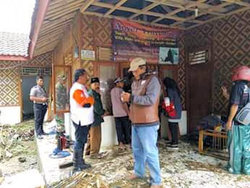
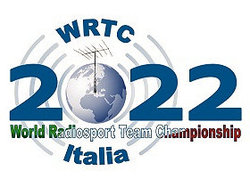 value that's used in calculating qualifying scores, and each entry category has been assigned a weighting factor.
value that's used in calculating qualifying scores, and each entry category has been assigned a weighting factor. Sponsored by
Sponsored by 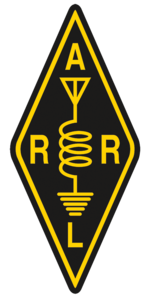 election cycle, and eight incumbent SMs began new 2-year terms on New Year's Day. In Southern New Jersey, Section Emergency Coordinator Tom Preiser, N2XW, of Manahawkin, was the only candidate by the September 7 nomination deadline. Incumbent Skip Arey, N2EI, of Beverly, decided not to run for another term after serving since January 2015.
election cycle, and eight incumbent SMs began new 2-year terms on New Year's Day. In Southern New Jersey, Section Emergency Coordinator Tom Preiser, N2XW, of Manahawkin, was the only candidate by the September 7 nomination deadline. Incumbent Skip Arey, N2EI, of Beverly, decided not to run for another term after serving since January 2015.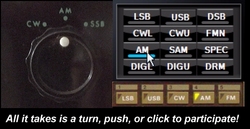 "We're very excited about the upcoming AM Rally in February, given its growth over the past 2 years and the positive comments we've received," said Clark Burgard, N1BCG, who is spearheading the event with Steve Cloutier, WA1QIX, and Brian Kress, KB3WFV. "In particular, it's great to hear how so many ops are giving this classic mode a try, many for the first time, and of the help offered to them by those who have mastered the technology."
"We're very excited about the upcoming AM Rally in February, given its growth over the past 2 years and the positive comments we've received," said Clark Burgard, N1BCG, who is spearheading the event with Steve Cloutier, WA1QIX, and Brian Kress, KB3WFV. "In particular, it's great to hear how so many ops are giving this classic mode a try, many for the first time, and of the help offered to them by those who have mastered the technology."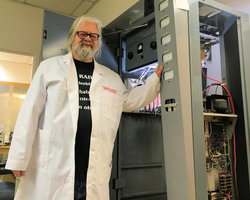
.JPG) Sponsored by the Boring (Oregon) Amateur Radio Club, this event has a simple exchange, suitable for younger operators: first name, age, location, and favorite color. After that, the contact can be as long or as short as each participant prefers.
Sponsored by the Boring (Oregon) Amateur Radio Club, this event has a simple exchange, suitable for younger operators: first name, age, location, and favorite color. After that, the contact can be as long or as short as each participant prefers..jpg)
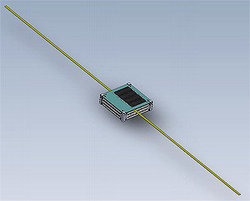 "We will aggressively enforce the FCC's requirements that companies seek FCC authorization prior to deploying and operating communications satellites and earth stations," FCC Enforcement Bureau Chief Rosemary Harold said. "These important obligations protect other operators against radio interference and collisions, making space a safer place to operate."
"We will aggressively enforce the FCC's requirements that companies seek FCC authorization prior to deploying and operating communications satellites and earth stations," FCC Enforcement Bureau Chief Rosemary Harold said. "These important obligations protect other operators against radio interference and collisions, making space a safer place to operate.".jpg) weather balloon-to-ground station tests and other unauthorized equipment tests prior to the launch. All these activities required FCC authorization.
weather balloon-to-ground station tests and other unauthorized equipment tests prior to the launch. All these activities required FCC authorization.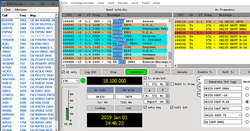
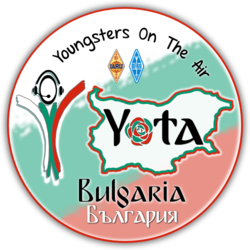 aiming to create a snowball effect [to inspire] more and more YOTA events all over the world. This also allows other youngsters and newcomers to enjoy Amateur Radio."
aiming to create a snowball effect [to inspire] more and more YOTA events all over the world. This also allows other youngsters and newcomers to enjoy Amateur Radio." The ARRL Foundation Scholarship program will accept applications from eligible applicants until January 31, 2019. All applicants must be FCC-licensed radio amateurs, and many scholarships have other specific requirements, such as intended area of study, ARRL Division, Section or state, and license class. Applicants should review the scholarships and check off the ones for which they are eligible.
The ARRL Foundation Scholarship program will accept applications from eligible applicants until January 31, 2019. All applicants must be FCC-licensed radio amateurs, and many scholarships have other specific requirements, such as intended area of study, ARRL Division, Section or state, and license class. Applicants should review the scholarships and check off the ones for which they are eligible.  FEMA Region 10 will conduct monthly communications exercises (COMMEX) on the third Wednesday of each month, starting on January 16, 1730 - 1900 UTC. Amateur Radio operators are invited to take part. The intent of these exercises is to test and exercise interoperable communication (federal/state/local/tribal/Amateur Radio) during a major disaster in which the communication infrastructure is significantly damaged or destroyed. FEMA Region 10 will use the call sign WGY910. Other stations associated with agencies and organizations that provide response support in accordance with the National Response Framework are encouraged to participate. The COMMEX will use these "dial" or "window" frequencies on 60 meters -- including 5,330.5 kHz, 5,346.5 kHz, 5,357.0 kHz, 5,371.5 kHz, and 5,403.5 kHz -- as part of the exercise. The area of operation is the continental US.
FEMA Region 10 will conduct monthly communications exercises (COMMEX) on the third Wednesday of each month, starting on January 16, 1730 - 1900 UTC. Amateur Radio operators are invited to take part. The intent of these exercises is to test and exercise interoperable communication (federal/state/local/tribal/Amateur Radio) during a major disaster in which the communication infrastructure is significantly damaged or destroyed. FEMA Region 10 will use the call sign WGY910. Other stations associated with agencies and organizations that provide response support in accordance with the National Response Framework are encouraged to participate. The COMMEX will use these "dial" or "window" frequencies on 60 meters -- including 5,330.5 kHz, 5,346.5 kHz, 5,357.0 kHz, 5,371.5 kHz, and 5,403.5 kHz -- as part of the exercise. The area of operation is the continental US. The Intrepid DX Group is seeking nominations for its annual
The Intrepid DX Group is seeking nominations for its annual 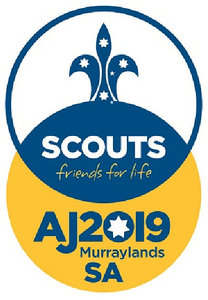 Amateur Radio will be part of the 2019 Australian Scout Jamboree. Australian Scouts will be on the air from special event station VI25AJ on January 4 - 14 from the 25th Australian Scout Jamboree (AJ2019), being held in Tailem Bend, South Australia. It's anticipated that some 2,000 Scouts will have the opportunity to experience Amateur Radio during the 10-day event. VI25AJ will be active on HF using SSB and digital modes, as well as on satellites, IRLP, and Echolink.
Amateur Radio will be part of the 2019 Australian Scout Jamboree. Australian Scouts will be on the air from special event station VI25AJ on January 4 - 14 from the 25th Australian Scout Jamboree (AJ2019), being held in Tailem Bend, South Australia. It's anticipated that some 2,000 Scouts will have the opportunity to experience Amateur Radio during the 10-day event. VI25AJ will be active on HF using SSB and digital modes, as well as on satellites, IRLP, and Echolink. 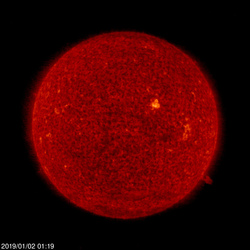 Predicted solar flux for the next 45 days is 75 on January 3 - 6; 72 on January 7; 70 on January 8 - 9; 71 on January 10 - 19; 69 on January 20 - February 2; 71 on February 3 - 15, and 69 on February 16.
Predicted solar flux for the next 45 days is 75 on January 3 - 6; 72 on January 7; 70 on January 8 - 9; 71 on January 10 - 19; 69 on January 20 - February 2; 71 on February 3 - 15, and 69 on February 16.







